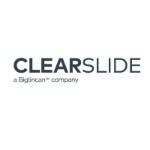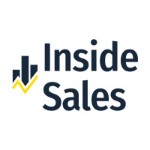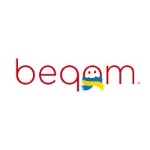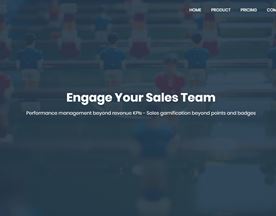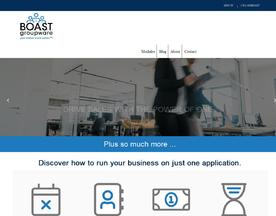SaaS Sales success hinges on grasping evolving customer needs, utilizing cutting-edge technologies, and implementing strategic pricing models to cultivate enduring relationships and propel business growth.
If you’re diving into the world of SaaS (Software as a Service) sales, you’ve hit the right spot. Today, I’m going to take you through a comprehensive journey, exploring the ins and outs of SaaS sales. Whether you’re a seasoned sales veteran or just dipping your toes in, this post has something for everyone. So, grab a coffee, and let’s get started!

Introduction to SaaS Sales: Understanding the Basics and Beyond
The Evolution of SaaS in the Sales Landscape
Remember the days when software came in bulky boxes with hefty manuals? Well, those days are long gone, thanks to SaaS. SaaS has revolutionized how we use and sell software. But what exactly is SaaS? In simple terms, it’s software hosted on the cloud, available on a subscription basis. This model offers flexibility, scalability, and affordability, making it a hit among businesses.
Why SaaS Sales is Different
SaaS sales isn’t your typical product selling. It’s more about understanding customer needs and offering solutions. The focus is on relationship-building, educating prospects, and ensuring long-term satisfaction. Why? Because SaaS is about recurring revenue. You want customers to stick around, and that requires a different sales model and approach.
The Unique Challenges of SaaS Sales
- Competition: The SaaS market is crowded. Standing out requires not just a great product but also a self service model and stellar enterprise sales model and strategy.
- Customer Expectations: Today’s customers are tech-savvy and well-informed. They expect personalized, quick, and effective solutions.
- The Importance of Customer Success: In SaaS, the sale is just the beginning. Customer success is vital for retention and upselling.

Developing a Robust Go-to-Market Strategy for SaaS Products
The success of a SaaS product heavily relies on a well-crafted go-to-market (GTM) strategy. This section will discuss how to develop and implement a GTM strategy that aligns with your product offerings and market dynamics.
Identifying Your Target Market
Start by clearly defining who your product is for:
- Market Research: Conduct thorough research to understand the needs, pain points, and behaviors of your target audience.
- Segmentation: Segment your market to tailor your approach to different groups, enhancing relevance and impact.
Crafting a Unique Value Proposition (UVP)
Your UVP sets you apart from competitors:
- Highlighting Key Benefits: Focus on what makes your product unique and how it solves specific problems for your target audience.
- Aligning with Customer Needs: Ensure your UVP resonates with your target market’s needs and expectations.
Choosing the Right Channels for Distribution and Promotion
Select channels that best reach your audience:
- Multi-Channel Approach: Utilize a mix of digital and traditional channels based on where your target market is most active.
- Leveraging Partnerships: Collaborate with other businesses or platforms to extend your reach.
Developing a Marketing and Sales Alignment
Ensure your marketing and sales efforts are synchronized:
- Integrated Strategies: Develop marketing strategies that support and feed into your sales pipeline.
- Consistent Messaging: Maintain consistency in messaging across all marketing and sales communications.
Setting Clear Goals and Metrics
Define what success looks like:
- Goal Setting: Establish clear, measurable goals for market entry, such as customer acquisition targets, revenue goals, or market share objectives.
- Performance Metrics: Determine key metrics to track progress and adjust strategies as needed.
Continuously Analyzing Market Feedback and Adapting
Be ready to pivot or adjust based on feedback:
- Market Feedback Loop: Regularly collect and analyze feedback from customers and the market.
- Agile Adaptation: Stay agile in adapting your strategy in response to feedback and changing market conditions.
Key Points:
- Define your target market and craft a resonating UVP.
- Choose effective channels for distribution and promotion.
- Align marketing and sales efforts for cohesive strategy execution.
- Set clear goals and track performance with defined metrics.
- Continuously gather market feedback and remain adaptable to change.
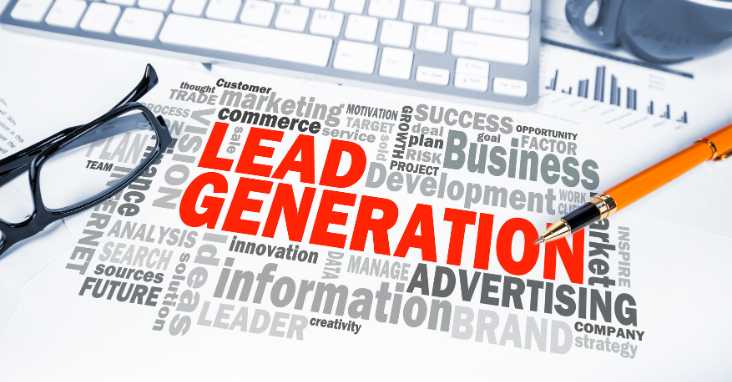
Effective Lead Generation Strategies for SaaS Sales: Amplifying Your Outreach
Lead generation is the lifeblood of SaaS sales. It’s about creating a pipeline of potential customers who are interested in what you have to offer. Here, we’ll expand on effective strategies to enhance your lead generation efforts.
Embracing a Multi-Channel Approach
Diversify your lead generation channels for maximum impact. This means:
- Utilizing a combination of online and offline channels.
- Leveraging social media platforms like LinkedIn, Twitter, and Facebook for targeted campaigns.
- Exploring webinars, podcasts, and industry events as avenues for outreach.
Content Marketing: A Powerful Tool
Content is king in the digital world, especially in SaaS sales. Focus on:
- Developing insightful and valuable content that addresses common pain points and questions in your industry.
- Using blogs, whitepapers, eBooks, and case studies to establish thought leadership.
- Optimizing content for SEO to improve visibility and attract organic traffic.
Personalization at Scale
In today’s digital age, personalization can set you apart. This involves:
- Segmenting your audience and tailoring your messages to suit different segments.
- Utilizing CRM and marketing automation tools to personalize at scale.
- Ensuring that your messaging resonates with the specific needs and interests of your prospects.
Leveraging Customer Testimonials and Case Studies
Social proof is incredibly powerful in SaaS sales. Make the most of it by:
- Showcasing customer testimonials and case studies on your website and in your marketing materials.
- Encouraging satisfied customers to share their experiences on social media and industry forums.
- Using video testimonials for a more engaging and personal touch.
Building Relationships Through Networking
Never underestimate the power of networking. This means:
- Attending industry conferences, seminars, and workshops to build connections.
- Joining and actively participating in relevant online communities and forums.
- Establishing partnerships with complementary businesses for cross-promotion opportunities.
Tracking and Analyzing Lead Generation Efforts
Finally, continuously monitor and analyze your lead generation strategies. This involves:
- Using analytics tools to track the performance of different channels and campaigns.
- Regularly reviewing and adjusting strategies based on performance data.
- Experimenting with new approaches and keeping abreast of industry trends.
Key Points:
- Utilize a multi-channel approach for diverse lead generation.
- Invest in content marketing to establish authority and attract leads.
- Personalize your outreach to connect effectively with prospects.
- Leverage social proof through customer testimonials and case studies.
- Engage in networking to build relationships and open new opportunities.
- Continuously track and refine your lead generation strategies based on performance data.
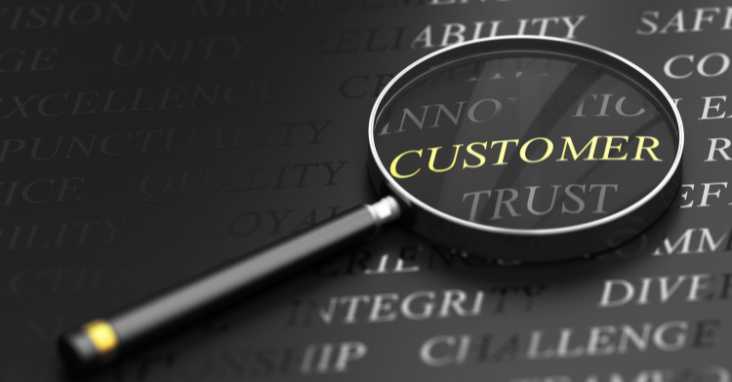
Cultivating a Customer-Centric Approach in SaaS Sales
In the competitive landscape of SaaS, a customer-centric approach is not just beneficial—it’s essential for sustained growth and success. This section will focus on strategies for embedding customer-centricity in every aspect of the SaaS sales process.
Understanding the Customer Journey
A deep understanding of the customer journey is crucial for effective SaaS sales. This involves:
- Mapping the Customer Journey: Identifying all touchpoints and experiences from the customer’s perspective.
- Empathy and Understanding: Putting yourself in the customer’s shoes to truly understand their needs and challenges.
- Tailoring Interactions: Customizing sales interactions based on the stage of the customer journey.
Building Long-Term Customer Relationships
In SaaS sales, the relationship doesn’t end with the sale. Focus on:
- Ongoing Engagement: Maintaining regular contact enterprise sales and providing sales representative with continuous value post-sale.
- Customer Success Programs: Implementing programs focused on customer success team and on helping customers achieve their goals with your product.
- Gathering and Acting on Feedback: Regularly soliciting customer feedback and using it to improve your product and services.
Personalization in Sales and Marketing
Personalization can significantly enhance customer experience and satisfaction:
- Segmentation and Targeting: Using customer data to segment your target audience with relevant messaging.
- Customized Solutions: Offering customized packages or features that cater to specific customer needs.
- Personalized Communication: Tailoring communication to reflect the customer’s industry, business size, and specific use cases.
Leveraging Customer Data for Improved Experiences
Effective use of customer data can transform the sales process:
- Data-Driven Insights: Analyzing customer data for insights into preferences and behavior.
- Predictive Sales Strategies: Using data to predict customer needs and tailor your sales approach accordingly.
- Enhancing Product Development: Utilizing customer feedback and usage data to guide product development and improvements.
Prioritizing Customer Support and Service
High-quality customer support is a cornerstone of customer-centric SaaS sales:
- Responsive Support Teams: Ensuring your support team is knowledgeable, empathetic, and responsive.
- Self-Service Resources: Providing comprehensive FAQs, knowledge bases, and forums for customers to find quick solutions.
- Regular Check-Ins: Proactively reaching out to customers to offer support and check on their satisfaction and needs.
Fostering a Culture of Customer-Centricity
Creating a customer-centric culture within your organization involves:
- Training and Development: Regularly training your team on customer-centric practices and approaches.
- Leadership Example: Leaders should model customer-centric behaviors and attitudes.
- Employee Empowerment: Empowering employees to make decisions that prioritize customer satisfaction.
Key Points:
- Deeply understand and map the customer journey for tailored sales strategies.
- Build and nurture long-term customer relationships post-sale.
- Implement personalization in sales and marketing for better customer engagement.
- Use customer data to enhance experiences and predict needs.
- Prioritize exceptional customer support and service.
- Cultivate a company-wide culture of customer-centricity.

Mastering the Art of SaaS Sales Negotiation: Strategies for Success
Effective negotiation is a cornerstone of successful SaaS sales. In this environment, it’s not just about closing deals; it’s about creating value for both your business and your clients. Here’s a deeper dive into strategies and nuances that can elevate your SaaS sales negotiations.
Understanding the Client’s Needs and Pain Points in Depth
In-depth knowledge of your client’s business is not just beneficial—it’s essential. This means:
- Conducting thorough research on the client’s industry, challenges, and competitors.
- Asking insightful questions during meetings to uncover deeper needs and pain points.
- Listening actively to understand not just what they need, but why they need it.
Crafting Tailored Solutions
SaaS sales is about offering solutions, not just selling web based software itself. This involves:
- Demonstrating how your product specifically addresses their unique challenges.
- Being flexible with your service offerings, such as customizable features or scalable packages.
- Showing clear ROI and value addition through your product.
Effective Communication and Building Trust
The way you communicate can make or break a negotiation. Focus on:
- Being transparent about your product capabilities and limitations.
- Building rapport and trust, which are as important as the technical aspects of your deal.
- Communicating your product’s value proposition clearly and confidently.
Handling Objections and Concerns Professionally
Objections are an opportunity to provide clarity and reinforce value. This requires:
- Preparing for common objections and having well-thought-out responses.
- Viewing objections as a chance to understand and address client concerns more deeply.
- Remaining patient and professional, and avoiding getting defensive.
Collaborative Negotiation for Long-Term Relationships
Aim for negotiations that are collaborative rather than confrontational. This means:
- Striving for solutions that benefit both parties, creating a sense of partnership.
- Being open to feedback and willing to make adjustments as needed.
- Focusing on building a long-term relationship rather than just closing a one-time deal.
Closing the Deal with Confidence
Finally, when it’s time to close the deal:
- Summarize the key benefits and value of your solution.
- Be clear about the next steps and what the client can expect after signing.
- Ensure that the closing process is as smooth and straightforward as possible.
Key Points:
- Deeply understand client needs and craft tailored solutions.
- Communicate effectively and build trust.
- Professionally handle objections as opportunities for clarification.
- Aim for collaborative negotiations to foster long-term relationships.
- Close deals confidently with a clear summary and straightforward process.

Strategic Pricing Models in SaaS Sales
The pricing model you choose in SaaS sales can greatly impact your success. It’s not just about setting the right price; it’s about adopting a strategy that aligns with customer expectations and business goals. This section will explore various strategic pricing models and how to implement them effectively.
Understanding Different Pricing Models
There are several pricing models commonly used in SaaS, each with its own advantages:
- Flat-Rate Pricing: A simple, one-size-fits-all approach that’s easy for customers to understand.
- Usage-Based Pricing: Charging based on the customer’s level of usage, which can appeal to a wide range of customers.
- Tiered Pricing: Offering different packages with varying features and price points, catering to different segments of the target market.
- Freemium Model: Providing a basic version of the product for free, with premium features available at a cost.
Aligning Pricing with Customer Value
Effective pricing in SaaS is about delivering value:
- Value Proposition: Ensure your pricing reflects the value your product provides.
- Customer Feedback: Regularly gather customer feedback to understand their perception of your product’s value and price.
- Competitive Analysis: Keep an eye on competitors to ensure your pricing remains competitive and fair.
Implementing Flexible Pricing Strategies
Flexibility can be key to meeting diverse customer needs:
- Customizable Packages: Offering customizable options can cater to specific customer needs and increase perceived value.
- Dynamic Pricing: Consider dynamic pricing strategies that can evolve based on market trends and customer feedback.
- Discounts and Promotions: Use these strategically to attract new customers or retain existing ones.
Transparency in Pricing
Being transparent about pricing builds trust:
- Clear Communication: Ensure your pricing structure is clearly communicated and easy to understand.
- No Hidden Costs: Avoid hidden fees or charges that can lead to customer dissatisfaction and churn.
- Easy Access to Pricing Information: Make pricing information readily available on your website and through your sales team.
Regular Review and Adjustment of Pricing
The SaaS market is dynamic, and your pricing should be too:
- Periodic Reviews: Regularly review your pricing model to ensure it remains relevant and competitive.
- Data-Driven Adjustments: Make informed adjustments based on sales data, customer feedback, and market trends.
- Announcing Changes Thoughtfully: Communicate any pricing changes to your customers thoughtfully and transparently.
Training Your Sales Team on Pricing
Your sales and marketing team should be well-versed in your pricing strategy:
- Regular Training: Provide ongoing training on the pricing model and its benefits.
- Sales Tools and Resources: Equip your team saas sales reps with the necessary tools and resources to communicate pricing effectively.
- Empowerment to Negotiate: Empower your sales team with some flexibility to negotiate pricing within predefined limits.
Key Points:
- Understand and choose a pricing model that aligns with your value proposition and customer needs.
- Implement flexible and transparent pricing strategies.
- Regularly review and adjust your pricing in response to market and customer feedback.
- Ensure clear communication and transparency in pricing.
- Provide thorough training and resources to your sales team on pricing strategies and negotiation.

SaaS Sales Analytics and Performance Measurement: Driving Growth Through Data
In the SaaS industry, where business models and customer behaviors are constantly evolving, leveraging analytics and performance measurement is not just beneficial; it’s essential. This practice helps in making informed decisions, optimizing sales strategies, and ensuring long-term success.
The Vital Role of Data in Steering SaaS Sales Strategies
Data-driven decision-making is at the core of modern SaaS sales strategies. By analyzing trends, customer behaviors, and sales performance, businesses can adapt their strategies to meet market demands and customer needs more effectively.
Key Performance Metrics in SaaS Sales
Customer Lifetime Value (CLV): Measures the total annual recurring revenue that a business can expect from a single customer account. It helps in understanding the long-term value of customer relationships.
- Customer Acquisition Cost (CAC): The total cost of acquiring a new customer. Balancing CAC with CLV is crucial for profitability.
- Churn Rate: The percentage of customers who stop using your service over a given period. A lower churn rate indicates higher customer satisfaction and retention.
- Monthly Recurring Revenue (MRR) Growth Rate: Tracks the month-over-month growth in recurring revenue. It’s a key indicator of business health and scalability.
Advanced Analytical Tools and Techniques
- Predictive Analytics: Tools like IBM Watson provide predictive insights, helping forecast future trends and customer behaviors.
- Customer Segmentation Analysis: Tools like HubSpot offer segmentation capabilities, allowing for more targeted and effective sales strategies.
- Sales Funnel Analysis: Understanding each stage of the sales funnel is crucial. Tools like Tableau help visualize and analyze this data for better funnel management.
Integrating Analytics into Daily Sales Practices
To fully benefit from sales analytics, it’s important to integrate these insights into daily sales activities. This means:
- Regularly reviewing key metrics with the sales team.
- Using data to guide sales training and development.
- Making real-time adjustments to sales strategies based on analytical insights.
The Future of Analytics in SaaS Sales
The future of SaaS sales will see an even greater integration of advanced analytics, AI, and machine learning. These technologies will provide deeper insights into customer needs, predict market trends, and automate parts of the sales process for greater efficiency.
Key Points:
- Analytics are crucial for data-driven decision making in SaaS sales.
- Key metrics include CLV, CAC, churn rate, and MRR growth rate.
- Utilize advanced analytical tools for predictive insights and better sales funnel management.
- Integrate analytics into daily sales practices for real-time strategy adjustments.
- Expect future advancements in analytics with AI and machine learning integration.

Optimizing Sales Processes and Workflows in SaaS
Efficiency in sales processes and workflows is critical for scaling and succeeding in the SaaS industry. This section will focus on strategies for streamlining sales operations to enhance productivity and customer satisfaction.
Assessing and Streamlining Sales Workflows
The first step in optimizing sales processes is a thorough assessment:
- Process Mapping: Identify each step in your sales process, from the sales qualified leads generation to closing deals and post-sale follow-up.
- Bottleneck Identification: Look for areas in the workflow where delays or inefficiencies occur.
- Streamlining Strategies: Implement strategies to streamline these processes, such as automating repetitive tasks or simplifying approval hierarchies.
Leveraging Sales Automation Tools
Automation can significantly enhance sales efficiency:
- CRM Systems: Use CRM systems to automate lead tracking, customer communications, and sales reporting.
- Email Automation: Implement email automation for regular follow-ups, lead nurturing, and marketing campaigns.
- Sales Analytics Tools: Use analytics tools to automate data collection and analysis for informed decision-making.
Enhancing Collaboration Among Teams
A collaborative approach can improve efficiency and outcomes:
- Cross-Departmental Collaboration: Foster collaboration between sales, marketing, product development, and customer service teams.
- Collaboration Tools: Utilize tools like Slack, Microsoft Teams, or Asana to enhance communication and project management.
- Regular Team Meetings: Hold regular meetings to align goals, share insights, and address challenges collectively.
Training and Empowering Sales Teams
Well-trained and empowered teams can operate more effectively:
- Ongoing Training: Provide regular training on new tools, products, and sales techniques.
- Empowerment Strategies: Empower sales representatives to make decisions that can speed up the whole sales rep process.
- Skill Development: Focus on developing skills like time management, negotiation, and customer relationship management.
Continuously Improving Sales Processes
Adopt a mindset of continuous improvement:
- Feedback Loops: Establish mechanisms for regular feedback from the sales team on the effectiveness of processes and tools.
- Adapting to Change: Be open to adapting sales strategies and processes in response to market changes and customer feedback.
- Benchmarking and Learning: Regularly benchmark against industry best practices and learn from successful competitors.
Measuring and Analyzing Sales Efficiency
Regularly measure the efficiency of your sales processes:
- Key Performance Indicators (KPIs): Track KPIs like sales cycle length, conversion rates, and customer acquisition costs.
- Sales Efficiency Metrics: Monitor metrics like average deal size, time spent per sales stage, and team productivity.
- Data-Driven Adjustments: Use these insights to make data-driven adjustments to your sales processes.
Key Points:
- Assess and streamline sales workflows for greater efficiency.
- Leverage automation tools to enhance productivity in sales operations.
- Enhance collaboration across teams to improve sales outcomes.
- Train and empower sales teams for better performance.
- Embrace continuous improvement and adaptability in sales processes.
- Measure and analyze sales efficiency to make informed adjustments.

Building and Nurturing a High-Performing SaaS Sales Team: Strategies for Success
A high-performing sales team is the backbone of any successful SaaS business. But how do you build and nurture long sales cycle of such a team? Let’s dive deeper into effective strategies and practices.
The Recruitment Process: Finding the Right Talent
When building a SaaS sales team, it’s critical to focus on:
- Identifying Key Traits: Look for candidates who are not just skilled in sales but are adaptable, tech-savvy, and customer-centric.
- Utilizing Various Channels: Leverage job boards, LinkedIn, and industry networks to find the best talent.
- Assessing Cultural Fit: Ensure that candidates align with your company’s values and culture.
Training and Development: Empowering Your Team
Once you have the right team, invest in their growth:
- Comprehensive Onboarding: Provide new hires with in-depth training on your product, sales processes, and company culture.
- Ongoing Training Programs: Regular workshops, webinars, and training sessions to keep the team updated on industry trends and sales techniques.
- Mentorship and Coaching: Pairing less experienced team members with seasoned sales professionals for guidance and support.
Fostering a Collaborative and Supportive Environment
The work environment plays a huge role in team performance:
- Encouraging Teamwork: Promote a culture of collaboration and mutual support.
- Open Communication Channels: Maintain transparency and open lines of communication within the team.
- Regular Team Meetings: Conduct weekly or bi-weekly meetings to discuss challenges, share successes, and align on goals.
Performance Management and Incentives
Keep your team motivated and focused:
- Setting Clear Goals and Expectations: Define clear, achievable goals for sales performance.
- Performance Tracking and Feedback: Regularly review individual and team performance, offering constructive feedback.
- Rewarding Success: Implement a fair and motivating incentive structure to reward high performers.
Promoting Work-Life Balance
Don’t forget the human element:
- Encouraging Time Off: Ensure your team takes adequate breaks to avoid burnout.
- Flexible Work Arrangements: Consider offering remote work options or flexible hours.
- Employee Wellness Programs: Implement initiatives focused on mental and physical well-being.
Building a Diverse and Inclusive Team
Diversity brings different perspectives and ideas:
- Encourage Diversity in Hiring: Actively seek to build a diverse team in terms of gender, race, and background.
- Promote an Inclusive Culture: Create an environment where everyone feels valued and included.
Key Points:
- Carefully select candidates who are skilled, adaptable, and a cultural fit.
- Invest in training and development to empower your team.
- Foster a collaborative, supportive, and transparent work environment.
- Implement effective performance management and incentives.
- Promote work-life balance and employee well-being.
- Strive for diversity and inclusivity within the team.

Embracing Technological Innovations and Trends in SaaS Sales
Staying ahead in the competitive world of SaaS sales requires not just skill and strategy, but also a keen understanding of technological innovations and market trends. This section will explore how embracing these elements can significantly enhance SaaS sales efforts.
Keeping Abreast with Emerging Technologies
In the rapidly evolving tech landscape, staying informed about new technologies is crucial. This involves:
- Regularly Researching Market Trends: Keeping up with industry news, attending webinars, and participating in tech forums.
- Adopting New Tools and Platforms: Experimenting with emerging sales and CRM tools that can make sales cycles offer competitive advantages.
- Training Teams on New Technologies: Ensuring your sales team is comfortable and proficient with the latest tools and platforms.
Utilizing AI and Machine Learning
AI and machine learning are revolutionizing many aspects of sales, including:
- Predictive Analytics: Using AI to predict customer behaviors and future sales trends.
- Automated Customer Interactions: Implementing chatbots and AI-driven communication tools for efficient customer engagement.
- Enhanced Data Analysis: Leveraging machine learning for deeper insights into sales data and performance metrics.
The Role of Big Data in SaaS Sales
Big data can transform how sales strategies are formed and executed:
- Customer Insights: Analyzing large datasets to gain a deeper understanding of customer preferences and behaviors.
- Market Analysis: Using big data to identify market opportunities and trends.
- Personalization at Scale: Tailoring sales and marketing efforts to individual customer needs based on data analysis.
The Impact of Cloud Computing
Cloud computing has become a backbone for many SaaS businesses, offering:
- Scalability and Flexibility: Easily scaling services to match customer demands and business growth.
- Data Security and Compliance: Ensuring data is securely stored and complies with regulations, a critical aspect for customer trust.
- Collaboration and Accessibility: Enhancing team collaboration with cloud-based tools and platforms accessible from anywhere.
Integrating Social Media into SaaS Sales Strategies
Social media platforms are powerful tools for:
- Brand Awareness and Reach: Building and expanding your brand presence.
- Customer Engagement and Feedback: Directly engaging with existing customers and gathering valuable feedback.
- Targeted Advertising: Using social media for targeted advertising campaigns based on user data and preferences.
Staying Agile and Adaptable
The key to success in leveraging technology is adaptability:
- Being Open to Change: Embracing new technologies and trends as opportunities for growth.
- Continuous Learning and Development: Encouraging a culture of ongoing learning within your team.
- Agile Response to Market Shifts: Quickly adapting sales strategies in response to technological and market changes.
Key Points:
- Stay updated with emerging technologies and market trends.
- Utilize AI, machine learning, and big data for advanced sales insights.
- Leverage cloud computing for scalability, security, and collaboration.
- Integrate social media effectively into your sales strategies.
- Maintain agility and adaptability in the face of technological change.

Software Tools Essential for SaaS Sales Success
In SaaS sales, having the right tools is half the battle won. Here are some must-haves:
Salesforce
CRM Software – Why It’s Useful: Salesforce remains a leader in customer relationship management, offering robust features for tracking interactions, managing sales pipelines, and analyzing customer data. It’s essential for maintaining detailed customer profiles and understanding their journey.
Zoom
Communication Tools – Why It’s Useful: In a world where remote sales calls are the norm, Zoom offers reliable video conferencing, which is essential for personalizing interactions and building rapport with clients.
Google Analytics
Analytics Tools – Why It’s Useful: Understanding how prospects interact with your website and content is key to refining your sales strategy. Google Analytics provides valuable insights into user behavior and campaign effectiveness.
Mailchimp
Email Marketing Tools – Why It’s Useful: Email marketing remains a powerful tool in the SaaS sales arsenal. Mailchimp offers user-friendly interfaces and advanced features for segmenting audiences, automating campaigns, and tracking performance.
LinkedIn Sales Navigator
Lead Generation and Prospecting Tools – Why It’s Useful: LinkedIn Sales Navigator is tailored for finding and connecting with potential leads. It offers advanced search filters, lead recommendations, and insights to help you target the right prospects.
PandaDoc
Proposal and Contract Management – Why It’s Useful: Crafting and managing proposals and contracts can be streamlined with PandaDoc. It offers customizable templates, e-signature capabilities, and integration with many CRM systems.
Zendesk
Customer Support and Success Tools – Why It’s Useful: Post-sale customer support is vital in SaaS. Zendesk provides a suite of tools for customer service, including ticketing systems, live chat, and knowledge bases, which are essential for maintaining customer satisfaction and reducing churn.
Asana
Project Management and Collaboration Tools – Why It’s Useful: Keeping sales teams organized and on track is crucial. Asana enables effective project management, task tracking, and collaboration, ensuring that sales processes run smoothly.
Key Points:
- CRM software like Salesforce is crucial for managing customer relationships.
- Tools like Zoom and Mailchimp enhance communication and marketing efforts.
- LinkedIn Sales Navigator and PandaDoc support lead generation and sales closure.
- Zendesk and Asana facilitate customer support and team collaboration.

Frequently Asked Questions About SaaS Sales
What is the average sales cycle length in SaaS?
- This question explores the typical duration from initial contact to closing a sale in the SaaS industry.
How important is customer feedback in SaaS sales?
- This addresses the role of customer feedback in shaping SaaS offerings and sales strategies.
Can social media be an effective tool for SaaS sales?
- This question delves into the effectiveness of social media platforms in the SaaS sales process.
How do free trials or demos impact SaaS sales?
- Examines the influence of offering free trials or demos on customer acquisition and conversion rates in SaaS.
What are some common objections in SaaS sales and how to overcome them?
- Discusses typical challenges faced during SaaS sales negotiations and strategies to address them.
How does content marketing benefit SaaS sales?
- Looks into the role of content marketing in attracting and engaging potential SaaS customers.
What’s the role of customer success in SaaS sales?
- Explores how customer success impacts the retention and growth of SaaS clientele.
How to handle churn in SaaS?
- Addresses strategies for managing and reducing customer turnover in SaaS businesses.
Are there any specific skills required for SaaS sales?
- Discusses the unique skills and competencies needed for success in SaaS sales roles.
How to measure success in SaaS sales?
- Explores the key performance indicators and metrics that define success in SaaS sales.

Conclusion: Embracing the Future of SaaS Sales with Confidence and Expertise
As we come to the end of our comprehensive exploration of SaaS sales, it’s clear that this is not just a transactional sales model; it’s a journey towards building lasting relationships and providing value that grows over time. Mastering SaaS sales requires a blend of strategy, empathy, and continuous evolution.
The Core of SaaS Sales: Relationship and Value
Remember, at the heart of SaaS sales is the relationship you build with your customers. It’s about understanding their needs, not just at the initial sale, but throughout their lifecycle with your product. The value you provide should evolve with your customer’s growing business, making your service indispensable.
Staying Ahead in a Competitive Landscape
The SaaS landscape is dynamic and competitive. To stay ahead, you must be willing to continuously learn and adapt. This means keeping up with industry trends, understanding emerging technologies, and being flexible in your sales approach.
Leveraging Technology and Human Insight
While technology is a powerful enabler in the SaaS sales cycle, the human element cannot be overlooked. Balancing the use of sophisticated tools with genuine human interaction and insight is key. Personal connections still play a vital role in building trust and loyalty.
The Role of Leadership in Shaping a Successful SaaS Sales Strategy
If you’re in a leadership role, remember that your vision and approach set the tone for your entire sales team. Cultivate a culture of curiosity, resilience, and customer-centricity. Encourage your team to view challenges as opportunities for growth and learning.
Preparing for the Future
As we look to the future, one thing is certain: change is constant in SaaS sales models. But with change comes opportunity. Embrace it with an open mind and a willingness to innovate. Be ready to pivot strategies, explore new markets, and constantly refine your approach based on feedback and performance data.
Key Points:
- SaaS sales revolve around building and nurturing customer relationships.
- Stay adaptable and informed to remain competitive in the evolving SaaS market.
- Balance technology with personal interaction for a holistic sales approach.
- Leadership plays a crucial role in fostering a resilient and customer-focused sales team.
- Embrace change and prepare for the future with continuous innovation and learning.


